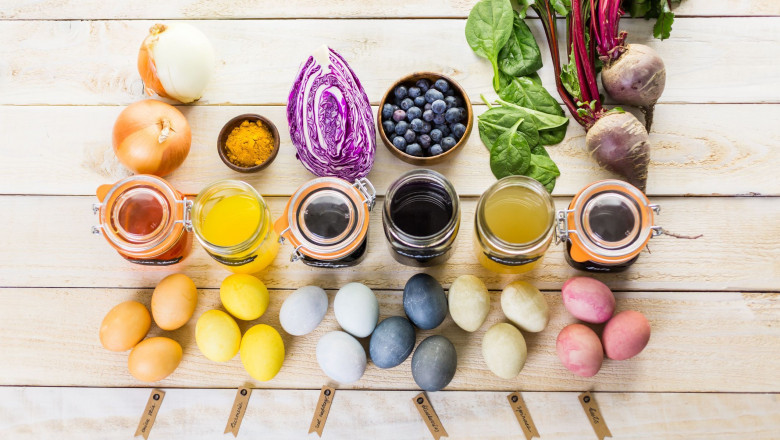views
Food colors have become an integral part of our culinary landscape, transforming the way we perceive and enjoy our meals. These colorful additives have revolutionized the food industry, influencing consumer choices and enhancing the overall dining experience. From natural extracts to synthetic compounds, food colors play a crucial role in making our plates more visually appealing and appetizing. In this article, we will explore the fascinating world of food colors, their origins, applications, and impact on the food industry.
The History of Food Colors
The use of Food Colors dates back thousands of years, with ancient civilizations utilizing natural sources to enhance the appearance of their meals. In ancient Egypt, saffron was used to add a vibrant yellow hue to dishes, while the Romans used mulberry juice to create a deep purple color. As trade routes expanded and new ingredients became available, the palette of natural food colors grew more diverse.
During the Industrial Revolution, synthetic food colors began to emerge. In 1856, William Henry Perkin accidentally discovered the first synthetic dye, mauveine, while attempting to synthesize quinine. This breakthrough paved the way for the development of artificial food colors, which quickly gained popularity due to their stability, consistency, and cost-effectiveness.
Natural vs. Synthetic Food Colors
Food colors can be broadly categorized into two main types: natural and synthetic. Natural food colors are derived from plant, animal, or mineral sources. These include ingredients such as beet juice, turmeric, spirulina, and cochineal extract. Natural colors are often perceived as healthier and more appealing to consumers seeking clean label products.
Synthetic food colors, on the other hand, are artificially created in laboratories. These colors are typically more stable, vibrant, and cost-effective than their natural counterparts. Common synthetic food colors include Red 40, Yellow 5, and Blue 1. While synthetic colors have been widely used in the food industry for decades, there has been growing concern about their potential health effects, leading to increased demand for natural alternatives.
The Science Behind Food Colors
The science of food coloration involves a complex interplay of chemistry, physics, and biology. Food colors work by absorbing certain wavelengths of light and reflecting others, creating the perception of color in our eyes. The stability and intensity of food colors can be affected by various factors, including pH, temperature, light exposure, and the presence of other ingredients.
Food color chemists and technologists work tirelessly to develop new coloring agents and improve existing ones. They must consider factors such as heat stability, light fastness, and compatibility with different food matrices to ensure that the colors perform consistently across a wide range of applications.
Applications of Food Colors in the Food Industry
Food colors are used extensively across various sectors of the food industry. In the beverage industry, colors are added to soft drinks, energy drinks, and cocktail mixers to create visually appealing products. The confectionery industry relies heavily on food colors to produce vibrant candies, chocolates, and gummies that catch the eye of consumers.
In the dairy industry, food colors are used to enhance the appearance of products such as yogurt, ice cream, and flavored milk. The bakery sector utilizes food colors to create visually striking cakes, pastries, and decorated cookies. Even in the savory food industry, colors are used to improve the appearance of products like sauces, snacks, and processed meats.
Food Colors and Consumer Perception
The role of color in influencing consumer perception and behavior cannot be overstated. Studies have shown that the color of food can significantly impact our expectations of taste, flavor, and even nutritional value. For example, a brightly colored beverage may be perceived as more flavorful and refreshing than a pale or colorless one, even if the taste is identical.
Food manufacturers leverage this psychological aspect of color to create products that are visually appealing and align with consumer expectations. For instance, strawberry-flavored products are often colored red, while lime-flavored items are typically green. This color-flavor association helps consumers quickly identify and choose products based on their preferences.
Regulatory Framework and Safety Considerations
The use of food colors is strictly regulated by food safety authorities around the world. In the United States, the Food and Drug Administration (FDA) oversees the approval and use of food colors. The FDA has established a list of color additives that are considered safe for use in food, known as "certifiable" colors.
Get More Insights On- Food Colors
Get this Report in Japanese Language:
Get this Report in Korean Language:
About Author:
Money Singh is a seasoned content writer with over four years of experience in the market research sector. Her expertise spans various industries, including food and beverages, biotechnology, chemical and materials, defense and aerospace, consumer goods, etc. (https://www.linkedin.com/in/money-singh-590844163)






















Comments
0 comment